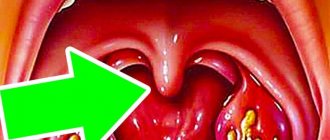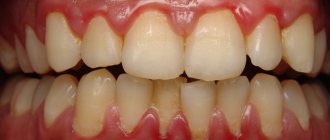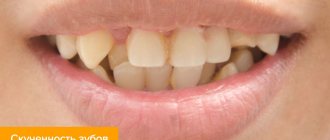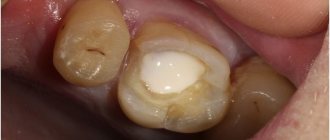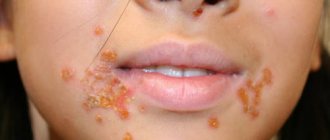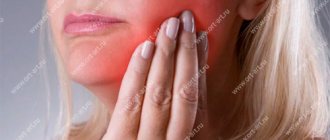1.General information
If you see a person’s face rapidly swelling, especially in the area of the eyelids and lips, the first thing that should come to mind is Quincke’s edema.
Acutely developing angioedema (neurovascular) edema is named after the German physician Heinrich Quincke, who gave the first detailed clinical description in 1882 (casuistic references to similar conditions have been found before). It is interesting that the term “Quincke’s edema” is used mainly in German- and Russian-speaking medicine, while in international English terminology they usually talk about “angioedema”.
Angioedema is one of the specific types of hypersensitivity reaction and can occur in any of us, regardless of age and gender. However, the predominance of young women (20-30 years old) among those with diagnosed episodes of Quincke's edema is sometimes reported. On the other hand, there is a form of angioedema (or rather, three subtypes) with a hereditary predisposition, first described by W. Osler six years after the publication of G. Quincke; In the presence of a family history, men are more often affected.
According to statistics, in the United States alone, angioedema causes emergency room calls about one hundred thousand times each year, and it consistently leads in the total number of allergic reactions and conditions that lead to hospitalization.
Sign up for a consultation
A must read! Help with treatment and hospitalization!
2. Reasons
Angioedema type 1 is usually associated with an acute allergic reaction localized in the upper part of the body and occurring in response to contact with a provoking substance. It can develop both independently and against the background of a provoked allergic status - for example, with urticaria, hay fever, etc. In general, Quincke's edema is most often compared with urticaria, although in the second case the reaction from the skin is not so deep and pronounced.
Another, non-allergic form of angioedema is caused by inherited dysfunction of the immune system, as a result of which a violent and inadequate immune reaction can occur suddenly, spontaneously, in response to almost any more or less intense irritant (for example, cold or hot air, chemical fumes, etc. .).
Visit our Allergology page
When fatigue is a sign of herpes...
Herpes virus type 6 (HHV-6 or HHV-6) was discovered back in 1986. In 2012, a sensational discovery occurred: it turns out that the herpes virus type 6 in adults may not manifest itself in any way, but can still cause a painful condition
Where does it come from?
According to various sources, about 80% of people are infected with herpes virus type 6. Most often, the infection occurs in early childhood - between the ages of 6 months and 2 years. This is due to the child’s loss of maternal immunity and the high prevalence of the virus. The first meeting can occur in the form of roseola - a sharp increase in temperature, after which a rash appears after 3-4 days. This is the only specific manifestation in children that can be used to suspect HHV-6.
Alas, once in the body, any herpes virus will not leave it. In most people, the immune system quite successfully suppresses the development of herpes virus type 6. Continuing to live in the body, but does not affect anything. But this does not happen for everyone.
Always exhausted
Chronic fatigue syndrome (CFS) has long been considered an independent disease. This is not the kind of fatigue that can be “cured” by vacation, a change of job, or just normal sleep. CFS is diagnosed when a person experiences persistent fatigue and a 50% or more decrease in performance for 6 months or more. In this case, there are signs of chronic infection: low-grade fever, enlarged lymph nodes, muscle and joint pain, chronic pharyngitis, headaches.
Sleep disturbances, depression, irritability, difficulty concentrating, memory and intelligence deterioration often occur. Sometimes appetite disappears, a person suddenly loses or gains weight, problems arise in the stomach, intestines, and urinary system. Moreover, allergy symptoms or sensitivity to bright light, alcohol, medications, etc. may appear.
Before receiving a diagnosis of chronic fatigue syndrome, a person must undergo examination to rule out other diseases. Often the only objective sign of infection is the identification of herpes type 6
How to find out?
At the stage of making a diagnosis or to clarify it, doctors prescribe a laboratory test Antibodies to the herpes virus type VI (Herpes simplex virus VI), IgG. You can take it yourself if you are concerned about decreased performance, and then consult a doctor. For him, it is enough to donate blood in the laboratory 3 hours after eating or in the morning on an empty stomach.
Any decrease in immunity can trigger HHV-6 to become active. Most often it is triggered by stress, flu, or exacerbation of a chronic infection. Often people associate a tired-depressive state with a consequence of illness or stress, but in fact they have become a trigger for the activation of the virus. The active virus lives and multiplies at the expense of lymphocytes - the main cells of the immune system. Therefore, symptoms of infection and damage to the nervous system, which is closely related to the immune system, arise. When the HHV6 virus is activated, it can be detected by PCR in oropharyngeal scrapings or in urine. If there are skin rashes and fever, then herpes virus type 6 can be detected in the blood.
Who will need it?
Doctors identify several groups of patients who need testing Antibodies to the herpes simplex virus VI, IgG, or detection of herpes viruses in an oropharyngeal smear. These are the people who are concerned about:
- memory problems, inability to concentrate on business;
- causeless pain and sore throat;
- soreness of the lymph nodes in the neck and under the ears for an unknown reason;
- muscle pain not associated with physical activity;
- joint pain that has no objective cause (trauma, osteochondrosis, etc.);
- headaches that have never happened before;
- sleep problems;
- weakness and exhaustion after physical activity, clearly not corresponding to the expenditure of effort;
- frequent colds
- feeling of fever or chills at normal temperature
How to treat?
Antiviral drugs for other types of herpes can also be effective for HHV6 infection; the choice of treatment available in Russia is up to the attending physician (different antiherpetic drugs are registered in different countries). Therefore, symptomatic treatment plus boosting immunity is mainly carried out.
Despite all this, type 6 herpes virus is not a death sentence. You can live with it once your immune system can get it under control. Surprisingly, a healthy lifestyle can be of great help in this regard. It is imperative to improve your sleep: for those who sleep less than 6 hours a day, the risk of developing CFS is several tens of times higher.
Get tested on time, and treatment will be the least expensive!
3. Symptoms and diagnosis
Regardless of the etiopathogenetic mechanism (allergic or congenital), Quincke's edema manifests itself primarily as severe swelling of the subcutaneous tissue and mucous membranes, mainly in the face and neck; The triad in the title of the article is especially noticeable. Swelling of the genitals, hands, feet, and internal organs is less common. Angioedema differs from similar conditions (the same urticaria) by the absence of itching and a more pronounced vascular reaction. However, many patients note a burning sensation or other noticeable discomfort.
Swelling of the larynx and structures of the respiratory system is very dangerous: sudden suffocation, stridor (wheezing) breathing and acute oxygen starvation occur, which can be fatal.
The clinical picture forms very quickly - within a few minutes or, maximum, 1.5-2 hours.
For a doctor, angioedema does not present diagnostic difficulties, as well as for a non-specialist who has at least once seen this condition with his own eyes. After visiting a doctor, allergy tests are prescribed, and the anamnesis is carefully studied in order to clarify the hereditary or allergic etiology.
About our clinic Chistye Prudy metro station Medintercom page!
Unexpected diagnosis: frost allergy
How do people react to cold? Strange question, you say. They shudder, feel cold, may feel goosebumps and even tremble. But for some people, even warm clothes can't save them from red itchy rashes, blisters, and even fever and aching joints! This is what an allergy to cold looks like.
There are no exact statistics on frost allergies. It is known that it appears most often between the ages of 14 and 30, and about 70% of those suffering from it are women. The reaction occurs when the thermometer drops to +4°C and below. In humid air and strong winds, the manifestations are more acute, since the cold is felt more acutely.
I can't tell if the red rash that appears on my skin in winter is a frost allergy or a sign of another problem. Is it possible to determine accurately?
The most affected areas of the body are the nose, earlobes, face, hands. But rashes can also appear under clothing if the person is cold enough. The classic hives appear first—a red rash with swelling, blisters, and itching. Then it may be accompanied by white and pink rashes. If cooling continues, systemic reactions of the body may begin - chills, fever, headache. There is even an increase in temperature and aching in the joints. The most dangerous reaction is Quincke's edema. The eyelids, lips, mucous membranes of the mouth and respiratory tract swell. The throat begins to feel sore and cough, and breathing may be impaired.
Of course, all these symptoms can be associated with other reasons. To make sure that cold air is to blame, they do a “frost test.” Place a piece of ice on the back of your hand and hold it for 2-5 minutes. If some time after removal a swelling and rash appears in this area, this is a sign of an allergy. Some tests can effectively help distinguish frost allergies from other conditions.
I have never had an allergy to cold before. Blisters on the skin, which I scratch until it hurts, began to appear after I was 25 years old. What explains the appearance of these itchy spots?
Primary cold allergy occurs on its own; its causes have not been precisely established. There is evidence that within 10 years after the first attack, the reaction to cold disappears on its own in about 25% of people.
There is a so-called secondary allergy to cold, which occurs as a result of other diseases. For example, after a person, especially a child, has had chickenpox, pneumonia, or infectious mononucleosis. It also develops against the background of chronic diseases, especially immune disorders, diseases of the liver and gastrointestinal tract, and helminthiases.
Although medicine is not sure of the causes of primary cold allergies, the mechanism of the reaction is quite clear. Under the influence of cold - no matter from the air, water or from some surface - special immune compounds called cryoglobulins are intensively produced in the blood vessels of the skin. They give such a skin reaction.
On the one hand, the strategy for dealing with allergies to cold seems to be clear: dress warmly, spend less time in the cold, do not swim in cold water, etc. But sometimes circumstances are stronger than us, and going out into the cold and starting to suffocate from Quincke’s edema is not the best outcome. Plus, as already mentioned, a reaction to cold can be a manifestation of serious internal diseases. Finally, cold reaction can easily be confused with Raynaud's disease. In her case, a person reacts to cold in a similar way, but not due to the production of cryoglobulins, but due to paroxysmal spasms of small blood vessels. It leads to ulcers and tissue necrosis.
Therefore, it is better to consult an allergist, conduct a diagnosis and get recommendations for relieving the acute condition.
I'm going to see an allergist. What tests should be prepared in advance?
Indeed, to save time, you can conduct research on some blood parameters even before visiting a doctor and come to him with ready-made results.
You can choose either a biochemical liver test or a liver examination, since half of the tests are the same.
A basic biochemical blood test will allow you to assess the general condition of the liver and the risk of vascular atherosclerosis. Based on this, it will immediately become clear whether a primary allergy to frost can be assumed, or whether this reaction is clearly a consequence of some kind of disease. It is advisable to donate in the first half of the day; before blood collection, do not eat for 8-14 hours; you can only drink regular still water.
Liver examination, basic - a set of tests that allows you to assess the condition of liver cells and its functioning. It is usually prescribed for increased fatigue and the presence of heaviness or pain in the right hypochondrium. If there is a reaction to cold, it will allow you to determine whether the allergy is a consequence of toxic, viral or other liver damage. It is given in the same way as a biochemical blood test.
Cryoglobulins are a study that will detect the very immune complexes with which the body responds to frost. It is better to check them, since their presence in croquis is accompanied by kidney damage. They may also indicate viral hepatitis and some other diseases. The test is taken in the morning after an 8-hour fast; you can drink plain water without restrictions.
If there is a suspicion of Raynaud's syndrome, often associated with rheumatic diseases, it is necessary to undergo a rheumatological advanced set of laboratory tests.
Speed up your diagnosis and rule out serious illnesses by getting all your tests done in one go at a conveniently located laboratory office.
4.Treatment
The key is to reduce and, if possible, completely eliminate the likelihood of contact with the allergen. To relieve acute symptoms, antihistamines, desensitizing, decongestants, anti-inflammatory drugs are used, incl. hormone-containing. In most cases, the patient is hospitalized, mainly due to the risk of asphyxia.
Methods for drug correction of immune failure (immunotherapy) are being actively developed, but at the moment such treatment is very expensive.
Sign up for a consultation

